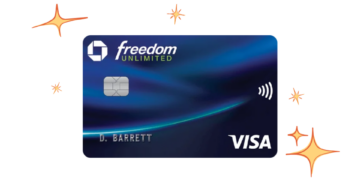How the credit card revolving credit works

The Flexible World of Revolving Credit
Envision a scenario where you have immediate access to funds for your purchases, irrespective of your current cash flow—that’s precisely the allure of revolving credit via credit cards. This financial tool provides considerable flexibility, allowing you to borrow funds up to a predetermined limit while giving you the freedom to repay over an extended period. But how exactly does this intricate system operate?
Using a credit card initiates a revolving cycle of borrowing and repayment that can significantly impact your financial health. When you make a purchase with your credit card, you tap into this cycle. Here are some essential features you should be well-acquainted with:
- Credit Limit: Each credit card has a maximum borrowing ceiling, known as your credit limit. This limit is determined based on your creditworthiness and income, and it dictates the highest amount you can spend on the card at any given time.
- Minimum Payments: To prevent account delinquencies and inclusive accumulation of charges, credit card issuers require a minimum payment each month. This amount is typically a small fraction of your total balance, which is designed to ensure you remain in good standing.
- Interest Rates: If you carry a balance from one month to the next, that amount accrues interest, generally at a relatively high rate. This factor makes it crucial to manage your payments wisely—if you can pay off your purchases in full each month, you’ll avoid these additional costs.
Revolving credit offers a unique advantage: with every repayment of your balance, the available credit can replenish, allowing you sustained access to funds. This feature can be incredibly beneficial for managing regular expenses, which might include:
- Groceries for your family, enabling you to keep your household well-stocked without immediate out-of-pocket expense.
- Gas for your vehicle, ensuring you can commute to work or run errands without the immediate need for cash.
- Online shopping sprees, which have become increasingly popular in the digital age, allowing you to purchase clothes, electronics, or gifts effortlessly.
Despite the convenience that revolving credit offers, it is vital to understand its nuances fully. Missteps can lead to high-interest debt that compounds quickly, making what seems like an easy option harder to manage. For instance, if you fail to make payments consistently or exceed your credit limit, this could have lasting consequences on your credit score, impacting your ability to secure loans in the future.
Therefore, knowledge and proactive management of your revolving credit can empower you to navigate this financial landscape effectively. By utilizing your credit card judiciously—taking advantage of grace periods and paying more than the minimum when possible—you can harness the potential benefits while minimizing the dangers that come along with mismanagement. Mastering these fundamentals not only enhances your spending power but also builds a stronger, healthier financial future.
SEE ALSO: Click here to read another article
Understanding the Mechanics of Revolving Credit
At its core, revolving credit combines the practicality of credit with the flexibility that many consumers seek in their financial decisions. When you first swipe your credit card, you might not realize you are tapping into a sophisticated borrowing mechanism that caters to your immediate needs and future endeavors. Let’s delve deeper into how this system functions and the implications of utilizing it wisely.
The beginning of your experience with revolving credit starts with the application process. Upon approval, your issuer assigns you a credit limit, which serves as your financial boundary. This limit reflects your income, credit history, and overall creditworthiness. Think of it as a secure credit vault: it allows you to access funds as long as you stay within the specified limit. Should you attempt to exceed this limit, you may face penalties or declined transactions, highlighting the importance of staying informed about your spending habits.
Once you’ve made charges, the subsequent step involves understanding how repayments are structured. Credit card issuers generally mandate a minimum payment each month, a safety net designed to keep you from slipping into delinquency. However, a common misconception is that making only the minimum payment is a sustainable choice. In reality, this ratchets up the time it takes to pay off your balance, leading to greater interest accrual over time. For example, if your balance is $1,000, and you only pay the minimum of $25 monthly, it could take years to eliminate that debt while accruing substantial interest costs.
Interest rates, another critical aspect of revolving credit, can vary widely based on factors like your credit score and the specific terms of your card. High-interest rates can contribute to an alarming cycle of debt if balances are not paid in full. To put this into perspective, consider this scenario: a $1,000 balance on a card with a 20% annual interest rate could lead to over $200 in interest charges if not addressed within a year. This highlights why it is essential to strive towards paying off the full balance each month whenever possible.
Yet, what makes revolving credit particularly intriguing is that every time you pay down your outstanding balance, your available credit limit replenishes. This feature fosters a cycle that provides ongoing access to funds for both routine expenses and unexpected emergencies. Here are a few typical scenarios where revolving credit can come in handy:
- Medical Expenses: In situations where health issues arise, having access to credit can help cover medical bills that catch you off guard.
- Home Repairs: If your home requires immediate attention, revolving credit can enable you to address issues without delay.
- Travel Costs: Planning a spontaneous trip? Your credit card can help fund travel arrangements while allowing you to pay over time.
While the benefits of revolving credit are profound, utilizing it with caution is paramount. Understanding the subtleties of interest rates, payment structures, and the implications of your spending can help you leverage this financial tool to your advantage. Ultimately, becoming well-versed in these concepts can lead to greater financial empowerment and stability in the long run.
CHECK OUT: Click here to explore more
The Impacts of Credit Utilization on Your Financial Health
As you navigate through the world of revolving credit, one factor that cannot be overlooked is credit utilization. This term refers to the ratio of your current credit card balances to your total available credit limit. Ideally, maintaining a low utilization rate—generally below 30%—is considered beneficial for your credit score. For instance, if your credit card limit is $5,000, this means keeping your balance below $1,500. A lower utilization rate is often a signal to potential lenders that you are responsible with credit, which can enhance your creditworthiness when you apply for loans, mortgages, or other forms of credit in the future.
Moreover, consistently high balances impact not just your credit score but also your financial wellbeing. High utilization can lead to increased anxiety as debts accumulate, creating a situation where it may feel daunting to break free from the cycle. Imagine a consumer who carries a $4,000 balance on a card with a $5,000 limit. Not only does this individual face monthly interest charges, but they may also struggle to manage their finances as they attempt to avoid exceeding their credit limit. To alleviate this burden, consumers should endeavor to strike a balance, ensuring that spending aligns with their repayment ability.
Knowing how revolving credit interacts with your spending habits is key. For example, indulging in luxury items or lifestyle choices can lead to unnecessary debt accumulation. It’s important to remember that every swipe is a potential debt obligation. This can lead you down a path where you might rely heavily on credit for everyday expenses. As a best practice, consider using your credit card primarily for planned purchases that you know you can pay off within the same billing cycle.
The Dual Nature of Rewards and Risks
One of the appealing aspects of revolving credit is the potential to earn rewards through cash back, points, or travel miles. Many credit cards offer enticing sign-up bonuses or valuable incentives for spending, which can make revolving credit an attractive option for savvy consumers. However, it is crucial to place these benefits in context. If you are accumulating points or cash rewards while carrying a balance that accrues high interest, the benefits you gain could be overshadowed by the costs incurred through interest payments.
For instance, consider a user with a credit card that offers 2% cash back on all purchases. If they frequently carry a balance of $2,000 at a 20% annual interest rate, the interest charges may exceed any rewards earned. This illustrates the importance of assessing whether the allure of rewards is worth potential pitfalls.
Additionally, understanding the fee structures associated with revolving credit can help avoid surprises. Many cards have annual fees, foreign transaction fees, or late payment fees that can add to your total cost of credit. Paying attention to these costs not only helps you manage your expenses but also allows you to select a credit card that suits your financial habits best.
- Transparency: Regularly review your statements to keep track of your spending, outstanding balance, and any applicable fees.
- Financial Education: Take time to familiarize yourself with credit terms and conditions, as well as interest calculations.
- Emergency Planning: Building an emergency fund can reduce reliance on credit cards in times of need, maintaining lower utilization.
Embracing the nuances of revolving credit—recognizing the balance between using it as a useful tool and avoiding the potential pitfalls—can lead you to a more favorable financial landscape. By remaining aware of credit utilization, the pros and cons of rewards programs, and accompanying fees, you can wield your credit card wisely as part of a broader financial strategy.
CHECK OUT: Click here to explore more
Conclusion: Mastering the Art of Revolving Credit
Understanding how credit card revolving credit works is crucial for anyone looking to navigate their financial journey with confidence. At its core, revolving credit offers flexibility and convenience, allowing consumers to manage expenses and make necessary purchases without immediate financial strain. However, with this power comes responsibility, as overspending or neglecting repayment can lead to significant debt and anxiety.
Establishing a keen awareness of your credit utilization can markedly influence your credit score and overall financial health. Remember, maintaining a balance that is well within your limit not only ensures a stress-free repayment process but also projects a responsible borrowing image to future lenders. Furthermore, exploring the rewards that come with credit cards should not overshadow the potential costs incurred through interest and fees. Striking a healthy balance between earning rewards and managing debt is essential.
Finally, being equipped with financial education and transparency about your spending habits can empower you to leverage your credit card as a tool for financial success rather than a burden. By proactively building an emergency fund and planning your purchases, you equip yourself to face unexpected expenses without solely relying on credit. In essence, mastering revolving credit hinges on thoughtful spending, informed management, and recognizing the long-term impacts of your financial choices. With these principles in mind, you can harness the benefits of revolving credit while paving the way toward a secure financial future.






